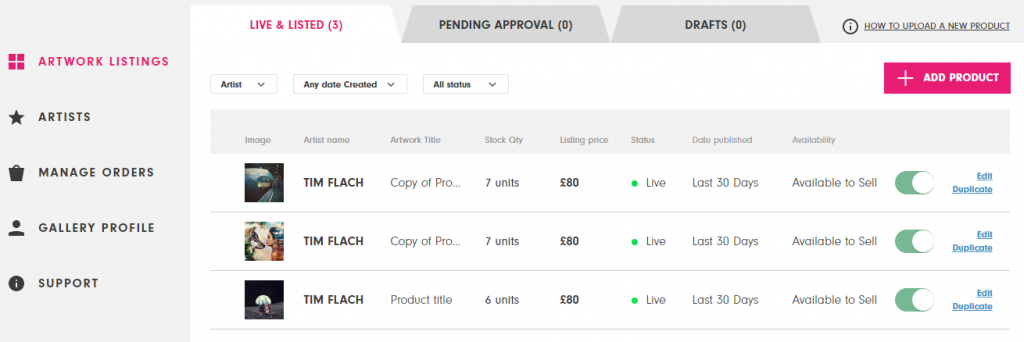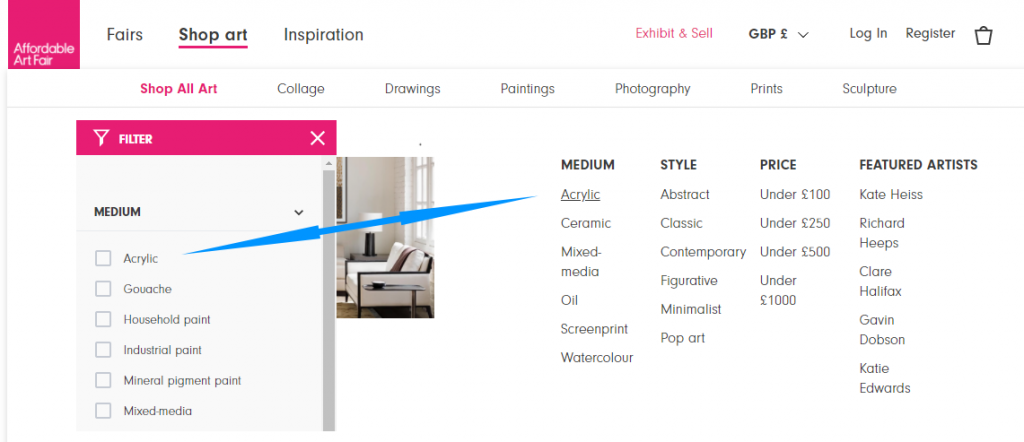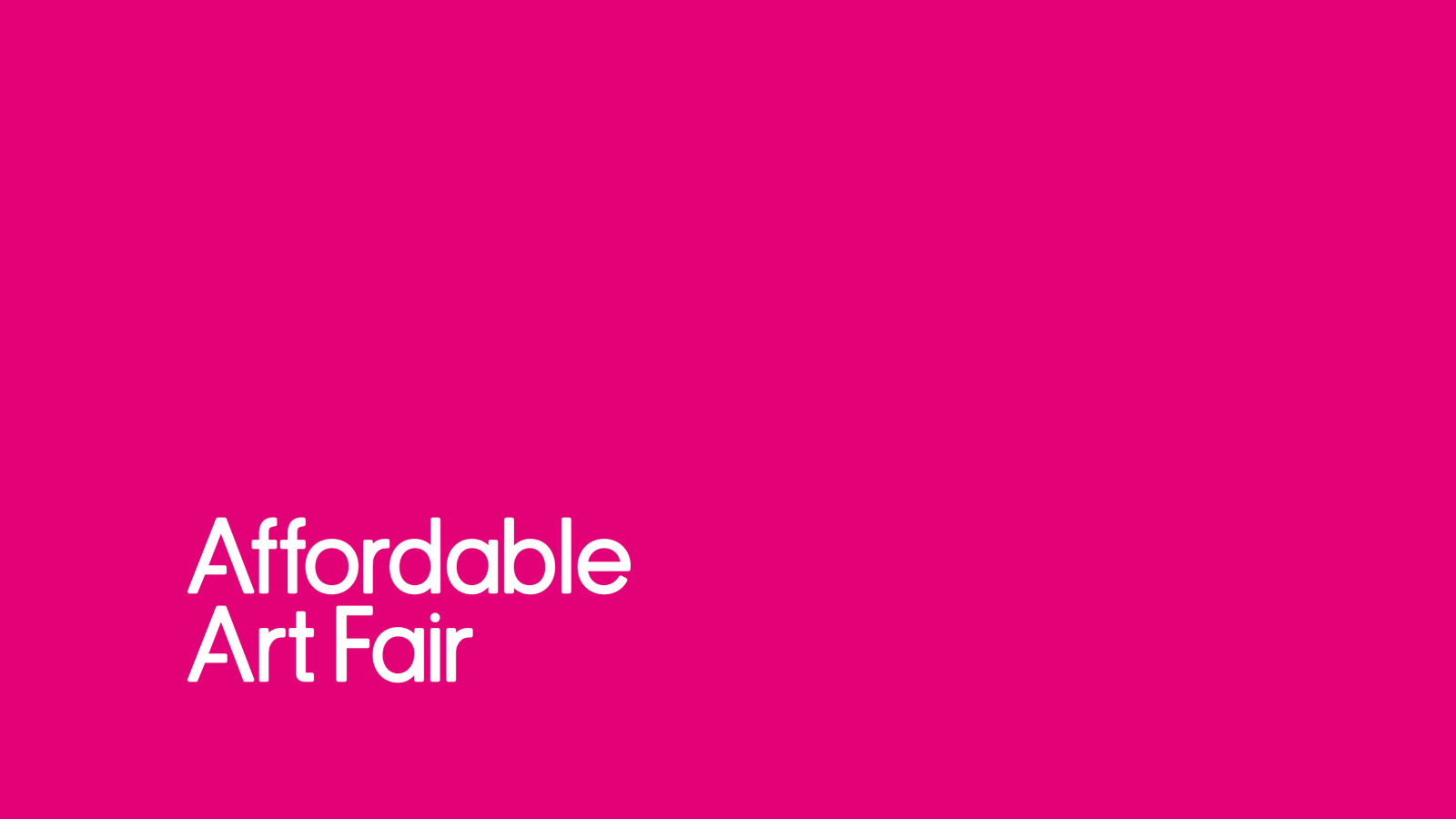Affordable Art Fair, organisers of contemporary art fairs in major cities across the world, have just released version 2.0 of their online marketplace. They could not have chosen a better time to upgrade their digital offering. Online art sales are booming due to the pandemic and new market segments.
Not that Affordable Art Fair are strangers to booming sales. A mission to make contemporary art more accessible to mainstream art aficionados (their current price ceiling is £6,000) has helped them draw record crowds within the physical realm. Since their first art fair in 1999, more than 2.8 million visitors have bought 500,000 artworks worth over £400 million.
“We started out with a vision to make art accessible and we led the charge in achieving that. Now we are focussed on inspiring more people to buy art. We already attract anyone from first time buyers to serious collectors scouting new talent. It’s been a case of disruption with a human touch.”
– founder and CEO, Will Ramsay
Now that’s a serious case of product-market fit in search of scalable technology to continue a superb growth trajectory!
Translating offline success into online growth can be tricky though. Fortunately, CobbleWeb was able to offer the Affordable Art Fair team the right mix of marketplace development experience, technical expertise, and user-flow insights. This is how we did it.
Objectives of Affordable Art Fair 2.0
The overall objective with the new marketplace platform was to engage users through a voyage of discovery that combined fun, convenience and accessibility. This was to be achieved by upgrading the platform architecture, improving the user experience of some elements, and integrating new features.
Specific development outcomes included speeding up the site through image optimisation, improving the browsing experience with visual search and enhanced (faceted) navigation, expanding the payment options, and internationalisation of user preferences (currencies, languages).
A lot of emphasis was also placed on improving the user experience of elements such as the home page, shipping, imagery, seller interface and curation tools. All of which created some interesting challenges that had to be overcome.
Challenges & Solutions
The development road map was divided into various user journey categories that had to be built or optimised. One of the biggest priorities was to sort out the slow website and some cumbersome work flows. For example, it previously took thirty minutes just to add a new artist!
Content Management System
The platform admins required a productive way to manage different types of content on the platform. For instance, the home page had to include reviews from users as well as featured posts from the blog. Admins also needed to create information pages for topics like returns policy and shipping information.
Art fairs presented additional content needs. They required pages with specific functionality such as location filters, the ability for users to express interest in exhibiting, and for fair teams to add exhibitors to a fair. Attendees had to be able to register and buy tickets for fairs.
We used a WordPress integration since it already offers much of the required functionalities: multi-level user permissions, version control, multilingual setup, and publishing workflows. As WordPress is open source, we were able to customise it so that pages created with it used the header and footer of the main site, which were created with a different technology (React).
We also created special page templates which can be customised via the WordPress content editor. For example, the home page automatically pulls in featured blog posts based on predefined rules.
The new CMS setup allows admins to manage user content in a more efficient manner. They can now refund, place orders, update orders, and update products on behalf of buyers and sellers. We added an email feature so that exhibitor applications are sent to the right admins for approval. Registering and buying tickets for fairs were taken care of by integrating Eventbrite.
SEO
Since SEO was identified as an important driver of traffic, the Affordable Art Fair team had to be able to optimise content pages in an efficient manner.
CobbleWeb suggested that as much of the SEO requirements as possible should be automated according to predetermined parameters. This included details on product pages, redirecting disabled pages to preserve SEO ranking, and URL structure.
User Management
Users had to be able to sign up to newsletters as well as create, log into and edit buyer or seller accounts, while administrators wanted access to and control over user details.
Newsletters sign-ups were integrated with a marketing automation platform which also checks if the email address already exists to avoid duplicates or merge contacts when an account is created after subscription.
Admins can now quickly view and edit user details such as user type (buyer or seller), name, email address, physical addresses, as well as language and currency preferences.
All users, including admin, can make use of the forgotten password feature. A maximum-login attempts feature which blocks accounts for a number of hours can be activated to prevent data tampering.
Buyer Funnel
As mentioned under objectives, improving the browsing and checkout experience was a top priority. Buyers therefore had to be assisted to find, select and order the right items in the shortest time possible. This included the ability to view and search seller details, view product details, (un)favourite products, and build a wish list.
Checkout requirements covered shopping cart management, guest checkout, shipping cost calculation, discount codes and a robust payment gateway.
In order to get users to where they wanted to be with the minimum amount of hassle we implemented powerful faceted navigation which combined a smart category structure with multiple filters and a standard sort mechanism.
Visual search was turbo-boosted by integrating Visii, an intuitive image search application. It uses deep learning and custom AI to provide users with more personalised search results and recommendations. Visii also includes standard display conditions, such as number of reviews, stock levels, best sellers, and IP locations, in its algorithm.
Seller pages were populated with bios and product lists, which include out of stock and discount labels. Product pages were updated with zoomable images, prices, SKUs, product location, description and specifications, and a shopping cart button. Buyers are now able to get an estimate of shipping costs on the product page, which minimises cart abandonment.
Recently viewed sections are added to search results and product pages via cookies. This means recently viewed products can be shown whether the user is logged in or not.
We used Stripe Connect for the payment system so that buyers can add products from multiple sellers to their shopping carts. This is possible due to Stripe Connect’s split payment capability.
The new guest checkout feature allows the creation of a soft account for extra-fast checkout. That means users can make purchases without logging in or saving personal information such as shipping addresses. Users can create a full account later if they so wish.
By default, accurate shipping costs are provided by UPS’s API once a delivery address is provided. Alternatively, sellers can set their own shipping costs based on their local shipping providers’ rates.
Buyers can add discount codes to their shopping carts which are deducted off the total due. The discount codes are based on rules set by sellers (see Product Management below).
Product Management
Product management is core to the seller experience and a key part of any platform curation. Both sellers and administrators had to be able to manage products efficiently. In addition, administrators also needed to manage categories, product attributes, and product search.
Since affordability is central to the ethos of the Affordable Art Fair marketplace it was important to enable sellers to set promotions and discounts at product, category and catalogue level.
CobbleWeb made sure that sellers are able to manage rules for their own promotions and discounts in the seller dashboard or on the product page. Through this sellers have access to a wide variety of promotion types:
- Threshold promotions, e.g. buy more than £100 and you get 5% discount on the cheapest/most expensive item or on the total cart value.
- Content promotions: presence of specific items in the cart, minimum purchase amount in a product category, presence of certain number of items in a category.
- Scarcity promotions, e.g. first 100 buyers will get a discount.
- Multi-unit promotions, e.g. buy three products and get the cheapest one free, buy two items and get a 20% discount.
- Closed list promotions, e.g. get 5 products for £100 from a given list of products.
- Delivery discounts: based on total value or number of products in the shopping cart.
Sellers have the ability to set open and close dates of promotions, can limit promotion aggregation (offers can’t be combined), can limit the usage of a promotion (10% off per customer or 10% off on all transactions), and can exclude certain products from promotions.
Administrators can not only create, update and delete categories, but also decide their hierarchy level. Products in deleted categories revert to parent categories.

Financial Flows
The bottomline is that marketplaces are built to make a profit. That’s why it is so important to choose the right revenue streams and design high-conversion payment flows. Affordable Art Fair wanted to be able to manage the marketplace fees on a variable basis, using either a percentage-based or fixed amount commission structure.
Sellers, on the other hand, want to be able to manage their sales in a transparent, secure and efficient manner. They especially want to track transactions and orders in their dashboard and manage their payout preferences.
CobbleWeb used Stripe Connect to build Affordable Art Fair’s preferred commission-based payment flow. We also made sure that sellers and administrators receive transaction notifications and can refund orders.

For enhanced security, Stripe’s machine learning-based fraud prevention application, Radar, was implemented to provide notifications of high-risk transactions.
Internationalisation
A global marketplace like Affordable Art Fair has to make sure that all user preferences are catered for, whether it is language, currency or date formats. International options created included:
- Different date, time, number and address formats
- Multiple combinations of language and currency per country
- Automatic price conversion into all currencies based on the market price
- Option for users to save their preferred language and currency so that the site always displays accordingly
Analytics
The only way to optimise your marketplace for success is to choose and measure the right metrics. CobbleWeb integrated and customised Google Tag Manager and Google Analytics, as well as Hotjar, so that various types of user behaviour can be tracked.
Advanced features
CobbleWeb developed some advanced features for Affordable Art Fair, which should play a central role in the platform’s future growth.
The new smart category management feature enables the platform administrators to add new categories, like Valentine’s Day, to the filter navigation. This makes it easier and faster to optimise category structures.

Universal shipping integration with UPS meant that sellers could not pass local cheaper shipping costs on to their customers. Now, sellers can customise shipping costs for different products and countries, which should make their products more attractive to buyers across the world.

Performance architecture! Two core objectives of the new platform were improved site architecture and faster site speed. Invariably, the former plays a role in the performance of the latter. And the latter is super important for conversion rates and revenue.
Affordable Art Fair version 2.0 was therefore built with PHP framework, Symfony, and JavaScript library, React. While Symfony provides backend scalability and extensibility, React is known for its fast rendering of frontend assets.
However, with an image-heavy site like Affordable Art Fair you need some extra tricks up your sleeve. Site speed was increased to a blazingly-fast 2 second average by using AWS cloud infrastructure, lazy loading of images, optimised API calls, and RabbitMQ message-queueing software.
To the future!
Affordable Art Fair is a great example of a successful bricks-and-mortar business that has proven product/market fit, and showed some traction with an MVP marketplace, before investing in a custom marketplace geared for scalable growth.
The end result is a powerful new marketplace platform with over 40,000 items, ready to delight millions of art lovers across the world.
If you would like to expand your offline business with an online marketplace, get in touch with CobbleWeb. We would love to set you up for further success.
